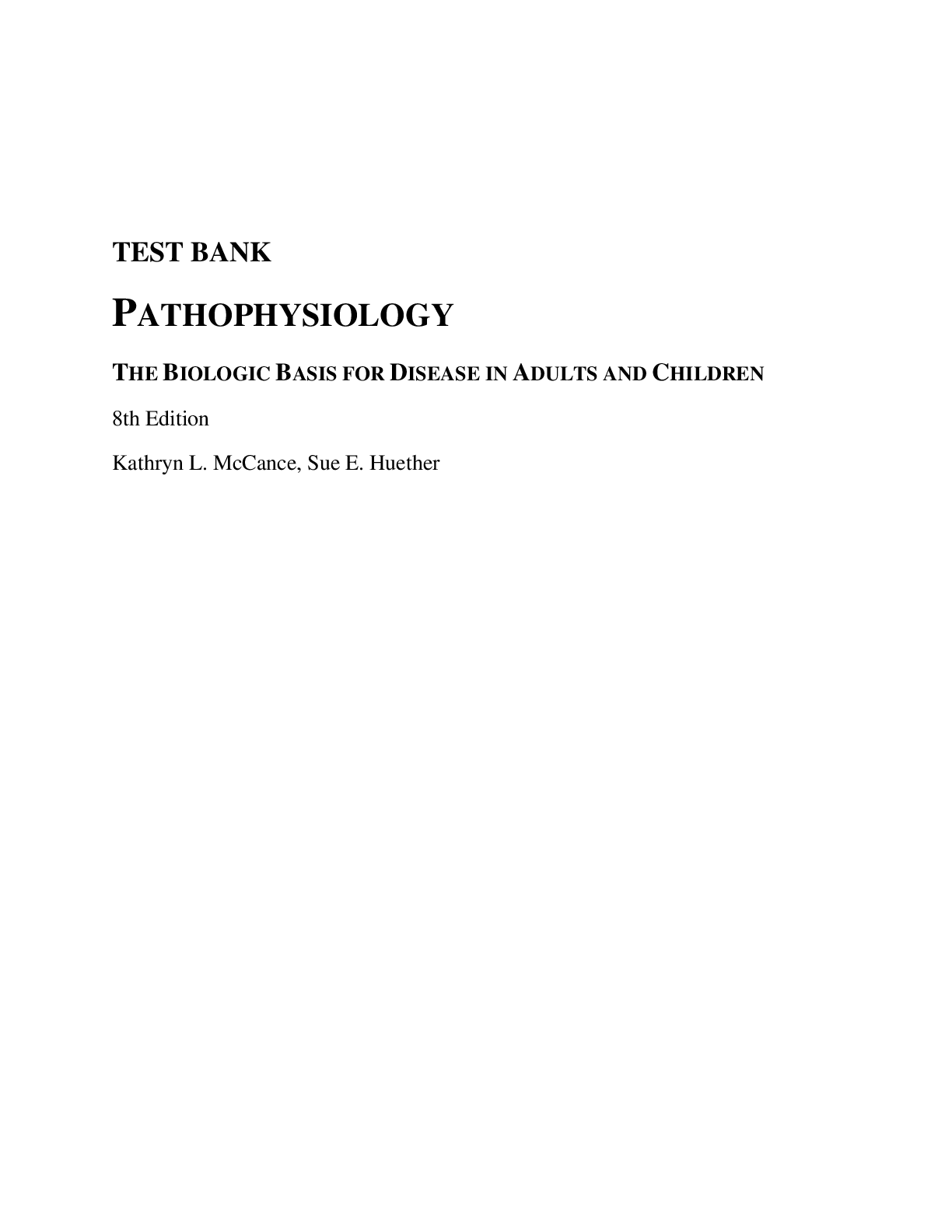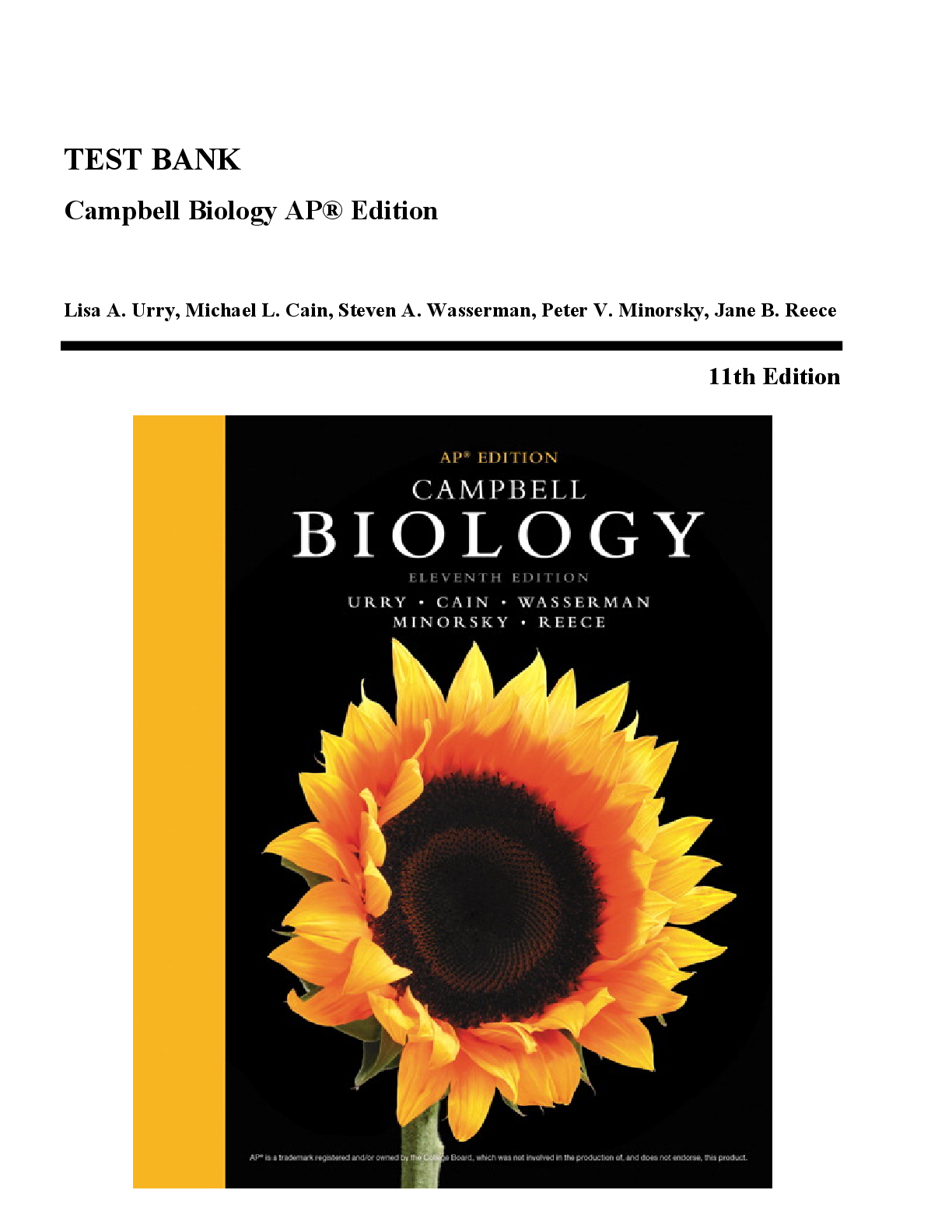TESTBANK FOR Campbell Biology, 11TH EDITION BY (Urry)
Document Content and Description Below
Chapter 1 Evolution, the Themes of Biology, and Scientific Inquiry1.1 Multiple-Choice Questions1) Cells are ________.A) only found in pairs, because single cells cannot exist independentlyB) limit... ed in size to 200 and 500 micrometers in diameterC) characteristic of eukaryotic but not prokaryotic organismsD) characteristic of prokaryotic and eukaryotic organismsAnswer: DBloom's Taxonomy: Knowledge/ComprehensionSection: 1.12) In comparison to eukaryotes, prokaryotes ________.A) are more structurally complexB) are largerC) are smallerD) do not have membranesAnswer: CBloom's Taxonomy: Knowledge/ComprehensionSection: 1.13) Which of the following types of cells utilize deoxyribonucleic acid (DNA) as their genetic material but do not have their DNA encased within a nuclear envelope?A) animalB) plantC) archaeanD) fungiAnswer: CBloom's Taxonomy: Application/AnalysisSection: 1.14) To understand the chemical basis of inheritance, we must understand the molecular structure of DNA. This is an example of the application of which concept to the study of biology?A) evolutionB) emergent propertiesC) reductionismD) feedback regulationAnswer: CBloom's Taxonomy: Application/Analysis [Show More]
Last updated: 2 years ago
Preview 1 out of 472 pages

Buy this document to get the full access instantly
Instant Download Access after purchase
Buy NowInstant download
We Accept:

Reviews( 0 )
$15.50
Can't find what you want? Try our AI powered Search
Document information
Connected school, study & course
About the document
Uploaded On
Jul 06, 2021
Number of pages
472
Written in
Additional information
This document has been written for:
Uploaded
Jul 06, 2021
Downloads
0
Views
284











(1).png)





